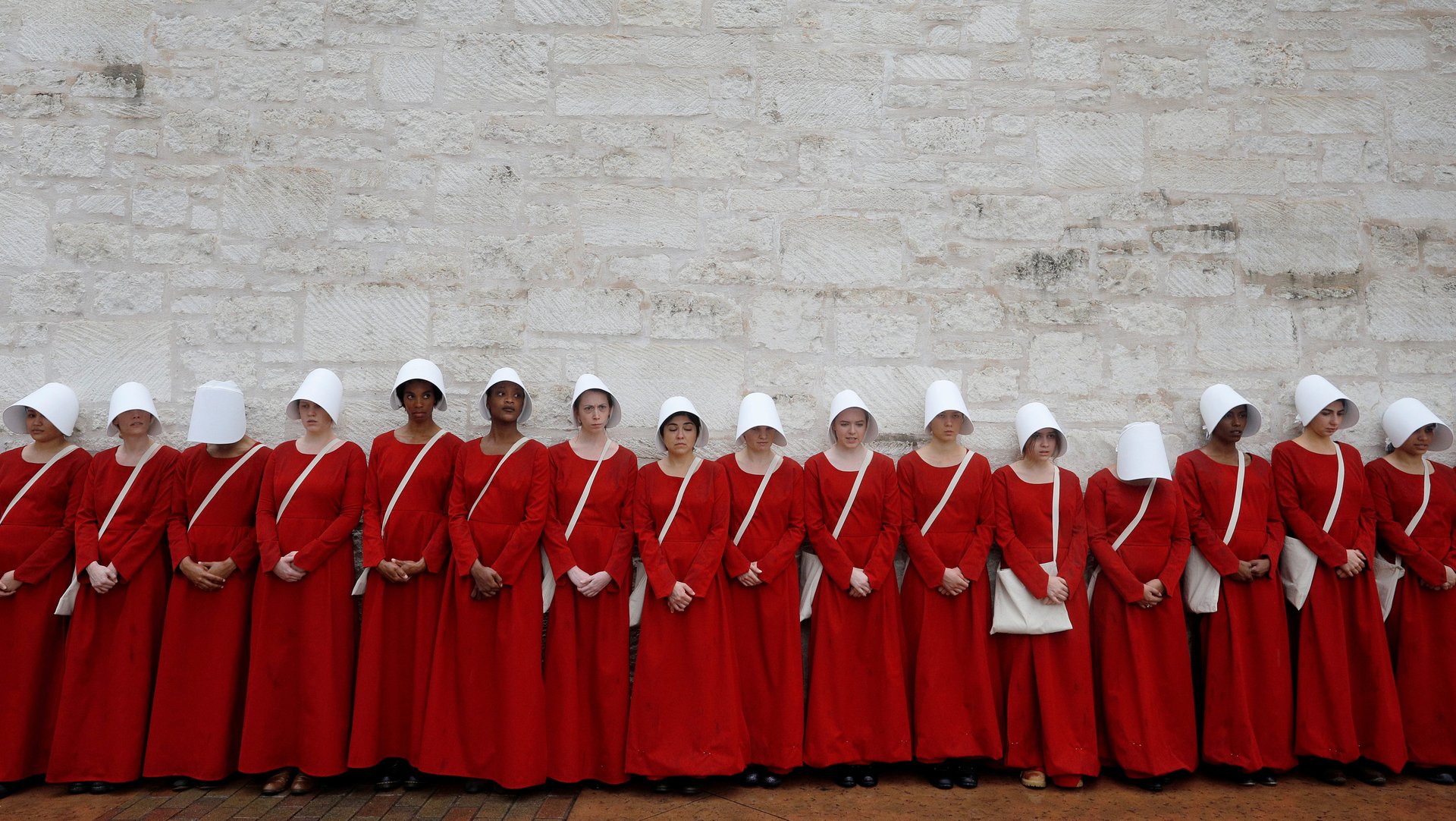The word “women” literally never appears in the US Senate’s 142-page health-care bill
Women have babies. If they didn’t, first the economy would collapse, and then the species would die out.


Women have babies. If they didn’t, first the economy would collapse, and then the species would die out.
But because they do, from their late teens to their early forties, women have higher health-care costs than men of the same age. Carrying and birthing a child is a sometimes difficult, dangerous, complicated business, and one that, in America, can be incredibly expensive.
Despite the incontrovertible fact that men are biologically just as responsible as women for a pregnancy happening, before the Affordable Care Act passed in 2010, women in the US paid more for health care and insurance because they are the ones who can get pregnant. Specifically, American women of child-bearing age paid somewhere between 52% and 69% more in out-of-pocket healthcare costs then men.
The Trump administration’s health-care reform bill now in the Senate, and the version that passed the House this May, will force some women to pay more again. Specifically, it strips out hundreds of billions of dollars from Medicaid, the insurance for the poor, which now covers over 50% of all births in many US states, and allows states to opt out of covering “essential” healthcare that includes maternity and newborn care.
The Senate bill was crafted behind closed doors, by 13 men and no women. A search of the language used in the 142-page draft document (pdf) shows that womanhood and motherhood are, quite literally, also omitted from most of the bill itself. Here are the few mentions.
Motherhood
The bill uses the word “mother” twice, both in relation to abortion, and specifically to how it will cut health care for women. On page 8, the bill lays out new definitions of which health care plans qualify under the act, eliminating ones that provide abortion except in rare circumstances, saying:
Section 36B(c)(3)(A) of the Internal Revenue Code of 1986 is amended by inserting before the period at the end the following:‘‘or a plan that includes coverage for abortions (other than any abortion necessary to save the life of the mother or any abortion with respect to a pregnancy that is the result of an act of rape or incest)’’
On page 9, under a section on “Exclusion of health pans including coverage for abortion,” the bill says
The term ‘qualified health plan’ does not include any health plan that includes coverage for abortions (other than any abortion necessary to save the life of the mother or any abortion with respect to a pregnancy that is the result of an act of rape or incest)
The words “maternal” or “maternity” never appear in the bill.
“Pregnancy” is only mentioned in relation to abortion and work requirements, except in one instance, in listing what “Medicaid flexibility programs,” which give states more control of Medicaid resources, should cover:
Pregnancy-related services, including postpartum services for the 12-week period beginning on the last day of a pregnancy.
Abortion is mentioned 11 times.
Womanhood
The word “woman” is used three times in the bill, but only in relation to abortion and a new work requirement.
The bill would withhold state funding from entities that provide abortions, except in very limited cases, among them, as described on page 35:
…the case where a woman suffers from a physical disorder, physical injury, or physical illness that would, as certified by a physician, place the woman in danger of death unless an abortion is performed, including a life-endangering physical condition caused by or arising from the pregnancy itself
The bill will allow states to decide that people who receive “medical assistance” need to work in order to qualify, and lays out some rules on those work requirements on page 50. Pregnant women and brand-new mothers cannot be required to work, but the requirement kicks in two months after birth.
States administering a work requirement under this subsection may not apply such requirement to (A) a woman during pregnancy through the end of the month in which the 60-day period (beginning on the last day of her pregnancy) ends.
The word “women” never appears in the Senate bill.
The Obamacare contrast
The Affordable Care Act, on the other hand, contains dozens of specific mentions of “women” that have nothing to do with abortion or work requirements. It is clear that it was written in part to make healthcare better and more accessible for women. Here are just a few:
- Section 3509: Improving women’s heath
- Part II: Support for pregnant and parenting teens and women
- Section 10412: Young women’s breast health awareness and support of young women diagnosed with breast cancer.
- The requirement that essential health benefits “take into account the health care needs of diverse segments of the population, including women, children, persons with disabilities, and other groups.”
- Priority grants for pregnant women under age 21
- The establishment of a Health and Human Services committee on women’s health.
- The establishment of a Centers for Disease Control office on women’s health.
- Funding for “cessation of tobacco use by pregnant women.”
Since the ACA passed, the number of women of child-bearing age without health insurance has dropped significantly. It is a full bill more than 900 pages long, not a draft working document like the Senate’s bill. But there’s little indication from that first draft that the men who wrote it are thinking about women’s health at all.